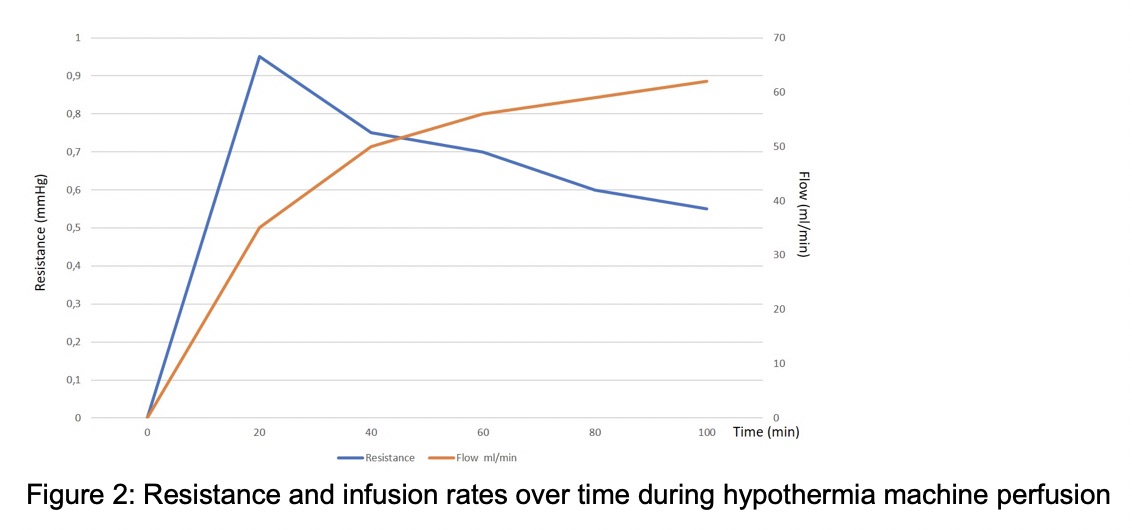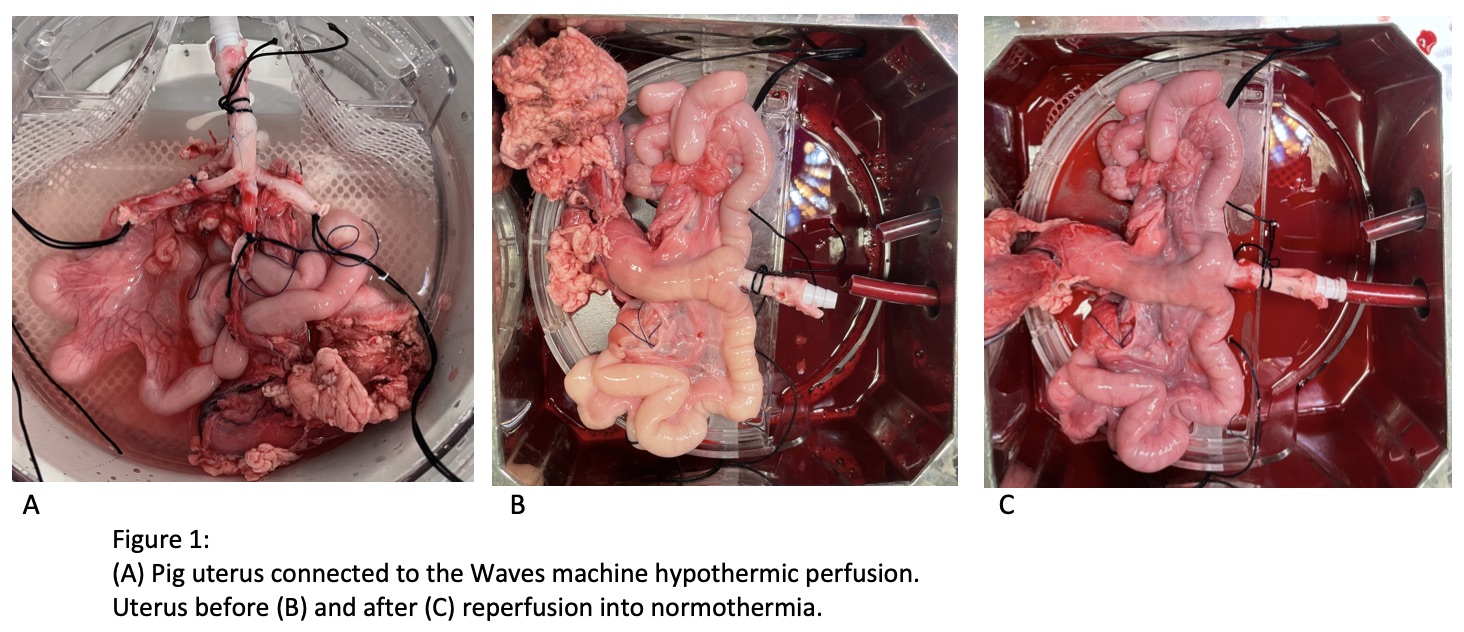Development of Ex-Situ Hypothermic and Normothermic Reperfusion as an Innovative Method to Preserve an Assess Uterus: A Preliminary Result
1Gynécologie, CHU Rennes, Rennes, France, 2Gynécologie, CHU Nantes, Nantes, France, 3Department of Urology, Chu Nantes, Nantes Université, ITUN, Nantes, France, Nantes, France, 4CHU Nantes, Nantes, France, 5Gynécologie, CHU Nantes, nantes, France, 6Université de Nantes, Nantes, France, 7Urologie, CHU Nantes, Nantes, France
Meeting: 2022 American Transplant Congress
Abstract number: 951
Keywords: Brain death, Ischemia, Living donor, Machine preservation
Topic: Basic Science » Basic Science » 15 - Machine Perfusion and Organ Rehabililtation - Basic
Session Information
Session Name: Machine Perfusion and Organ Rehabilitation - Basic
Session Type: Poster Abstract
Date: Sunday, June 5, 2022
Session Time: 7:00pm-8:00pm
 Presentation Time: 7:00pm-8:00pm
Presentation Time: 7:00pm-8:00pm
Location: Hynes Halls C & D
*Purpose: Uterine transplantation is a new surgical approach in transplantation community. It can be performed after living donation (LD) or Dead-Brain Donation (DBD). Static cold storage of uterus is the only standard method for preservation prior to transplantation. Pulsatile hypothermic machine perfusion (HMP) is an emerging method that could potentially improve the preservation of uterus to enhance graft preservation in the DBD context. To provide reassurance of organ, we propose that normothermic perfusion (NMP) of uterus after cold preservation allows necessary functional and physiological assessments.
*Methods: Porcine uterus was retrieved from animal house DBD model and flushed with IGL-1. After vascular preparation on back table, uterus was perfused by HMP through a canula in the aorta (Wave machine; Waters Medical Systems) for 100mn followed by 1h of NMP was achieved by Sorin Group extra-corporeal membrane oxygenation machine. Oxygenation was 21%. NMP parameters was a pressure of 40mmHg and temperature of 37°C. Perfusate was composed of red blood cells, plasma to provide a hematocrit of 25%, with additives of co-amoxiclav and 25,000IU of heparin.
*Results: The macroscopic appearance of the uterus at the end of HMP appeared viable (fig.1a) and was perfectly flushed. We observed a decrease of resistance index and an increase of perfusion flow at 20mn (Fig. 2). The assessment of the uterus vascularization after HMP preservation with normothermic reperfusion provide good perfusion and viability parameters during reperfusion (Fig. 1b, 1c).
*Conclusions: HMP seems to be feasible for uterine preservation in DBD porcine model. Normothermic perfusion is also a feasible method to allow physiological and vascularization assessment of uterus after preservation techniques encouraging us to further develop this model.
To cite this abstract in AMA style:
Dion L, Loiseau E, Mesnard B, Blancho G, Thubert T, Hervouet J, Minault D, Bas-Bernardet SLe, Josien R, Lavoué V, Branchereau J. Development of Ex-Situ Hypothermic and Normothermic Reperfusion as an Innovative Method to Preserve an Assess Uterus: A Preliminary Result [abstract]. Am J Transplant. 2022; 22 (suppl 3). https://atcmeetingabstracts.com/abstract/development-of-ex-situ-hypothermic-and-normothermic-reperfusion-as-an-innovative-method-to-preserve-an-assess-uterus-a-preliminary-result/. Accessed December 23, 2025.« Back to 2022 American Transplant Congress


